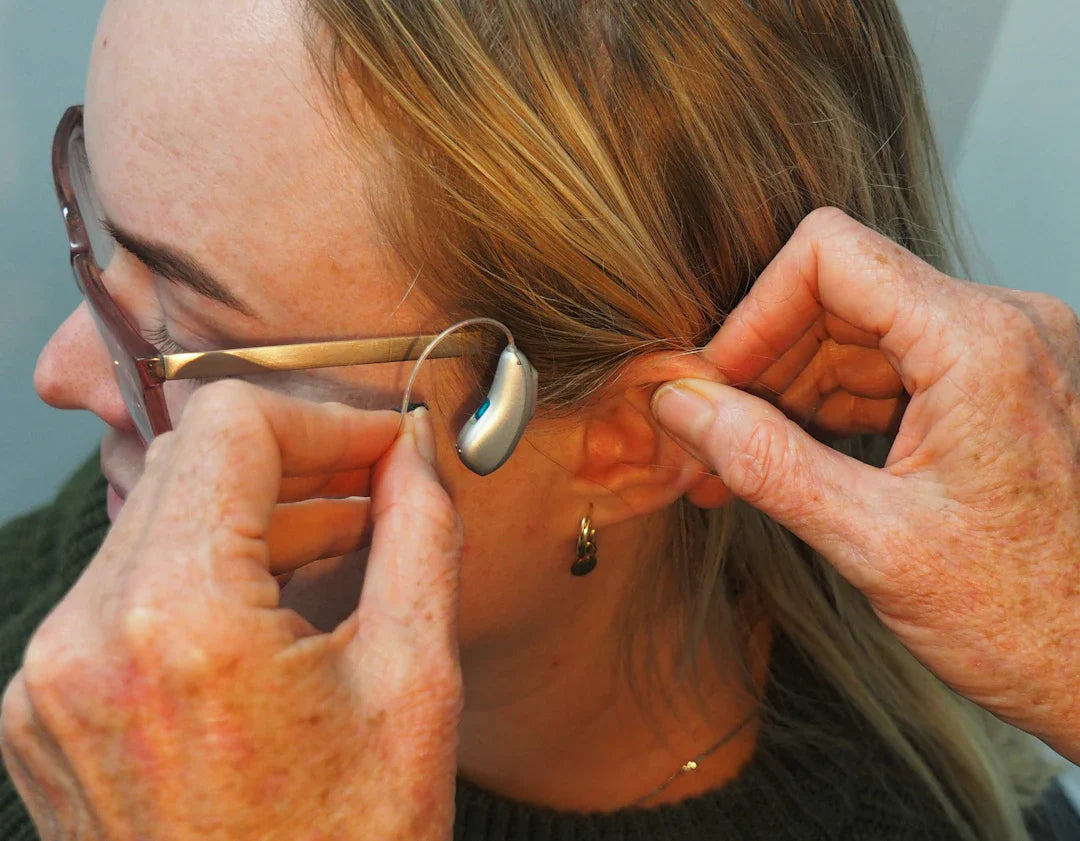Hearing loss is a common condition that affects millions of people worldwide. There are various causes and types of hearing loss, each requiring a different approach to treatment. In this article, we will explore the different hearing aid options available for specific hearing loss conditions.
Types of Hearing Loss
Before delving into hearing aid options, let's briefly discuss the different types of hearing loss:
1. Conductive Hearing Loss
Conductive hearing loss occurs when there is a problem in the outer or middle ear that prevents sound from reaching the inner ear. It can be caused by factors such as earwax build-up, fluid in the middle ear, or abnormalities in the ear structure.
2. Sensorineural Hearing Loss
Sensorineural hearing loss is the most common type of hearing loss and is caused by damage to the inner ear or the nerve pathways that transmit sound signals to the brain. Aging, exposure to loud noise, certain medications, and genetic factors can all contribute to this type of hearing loss.
3. Mixed Hearing Loss
Mixed hearing loss is a combination of conductive and sensorineural hearing loss. It occurs when there is damage in both the outer or middle ear as well as the inner ear or the nerve pathways.
Hearing Aid Options
Now that we have a basic understanding of the different types of hearing loss, let's explore the various hearing aid options available:
1. Behind-the-Ear (BTE) Hearing Aids
BTE hearing aids are worn behind the ear and are suitable for individuals with mild to profound hearing loss. This type of hearing aid amplifies sounds and delivers them through a tube to a custom earpiece that fits inside the ear canal.
2. In-the-Ear (ITE) and In-the-Canal (ITC) Hearing Aids
ITE and ITC hearing aids are custom-made to fit the shape of the wearer's ear canal. ITE hearing aids fill the entire outer ear, while ITC hearing aids are smaller and fit partially in the ear canal. These types of hearing aids are suitable for individuals with mild to severe hearing loss.
3. Receiver-in-Canal (RIC) and Receiver-in-the-Ear (RITE) Hearing Aids
RIC and RITE hearing aids are similar to BTE hearing aids but with a smaller behind-the-ear portion. The receiver, which delivers sound to the ear, is placed directly in the ear canal. These hearing aids are suitable for individuals with mild to severe hearing loss.
4. Completely-in-Canal (CIC) Hearing Aids
CIC hearing aids are the smallest hearing aids available and fit completely inside the ear canal. They are discreet and suitable for individuals with mild to moderately severe hearing loss.
Tailored Solutions for Specific Conditions
Now, let's dive into how hearing aids can be tailored to address specific hearing loss conditions:
1. Hearing Aids for Conductive Hearing Loss
For individuals with conductive hearing loss caused by factors such as earwax build-up or fluid in the middle ear, hearing aids can be an effective solution. These hearing aids work by amplifying sounds and bypassing the obstruction, allowing sound to reach the inner ear.
2. Hearing Aids for Sensorineural Hearing Loss
Individuals with sensorineural hearing loss may benefit from a variety of hearing aid options. The hearing aids will amplify sounds and deliver them to the inner ear, compensating for the damaged cochlea or nerve pathways. The specific type of hearing aid will depend on the severity of the hearing loss and individual needs.
3. Hearing Aids for Tinnitus
Tinnitus is a condition characterised by the perception of ringing, buzzing, or other noises in the ears. Some hearing aids come with built-in tinnitus maskers that provide external sounds to distract from the internal noise. These hearing aids can help individuals manage their tinnitus symptoms while improving their hearing.
4. Hearing Aids for Auditory Processing Disorder (APD)
Auditory processing disorder affects the brain's ability to process sound. Hearing aids with specific features, such as directional microphones and noise reduction technology, can help individuals with APD improve their listening skills and understanding of speech in noisy environments.
Importance of Earwax Removal and Hearing Assessments
Regular earwax removal and hearing assessments are essential for maintaining healthy hearing and identifying hearing loss conditions. Excessive earwax can block sound from reaching the eardrum, leading to temporary conductive hearing loss. Professional earwax removal can effectively restore normal hearing.
Hearing assessments, conducted by qualified audiologists, help identify the type and severity of hearing loss. These assessments provide valuable information for fitting appropriate hearing aids and ensuring optimal hearing outcomes.
Conclusion
Investing in the right hearing aids can significantly improve the quality of life for individuals with hearing loss. Understanding the specific hearing loss conditions and exploring the various hearing aid options available is crucial for finding the best solution.
At The Hearing Experts, we offer a wide range of hearing aids tailored to specific hearing loss conditions. Our team of experienced audiologists provides comprehensive hearing assessments and personalised recommendations to ensure the best outcomes for our valued customers.
Don't let hearing loss hold you back. Contact us today for a consultation and start your journey towards better hearing!




